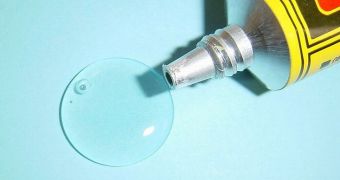For years, astronauts working in orbit have been complaining about the fact that they don't have access to glue-like substances that work in the harsh environment of outer space. A team of experts may have just answered that demand recently.
The researchers created a new type of adhesive, that features a host of strange characteristics. One of them is that it becomes tremendously sticky in dry environments, such as that of outer space.
This material can also operate in the chilly temperatures and vacuum that characterize Earth's orbit. Some of the applications it may be used for include minor repairs on the outer hull of the International Space Station (ISS) and on communications satellites orbiting Earth.
The glue could also be used for sticking together various parts in future space missions, such as sending a rover or an orbiter on or around another planet. For example, the Mars Science Laboratory (MSL) rover Curiosity features components that are bound together by a special type of duct tape.
According to experts at the Kansas State University, who developed the new glue, the Velcro-like material is not as strong as commercially available glue. Lead researcher and KSU professor of biochemistry John Tomich explains that the stuff is made out of peptides.
These molecules are basically chains of amino-acids, the same type of substances that are used to make proteins. Whenever the pH level of these peptides reaches 9, they become sticky. The human skin, for comparison, has a neutral pH of 5.5.
A pH of 0 is tremendously acidic, whereas one of 14 is basic. “The way this peptide works is, when we raise the pH it comes together and it forms long fibrils, and these fibrils become entangled,” Tomich says.
“So if I were to show you a picture of this, it would sort of look like a plate of spaghetti. These fibrils will form, and what happens if you have a rough surface, they’ll get caught around the crags and the holes of whatever that surface is,” he goes on to say.
He adds that, unlike other glues, this one becomes even stickier when moisture is removed from it. Other substances get brittle and eventually crack when they lose all of their water, Space reports.
“It could be used as a timing device or as a moisture-detection device. There could be a circuit or something that, when the moisture got to a certain level, the adhesive would fail and break the circuit, sounding an alarm,” Tomich proposes.
The team has now made its new glue technology available for purchase, and are waiting on offers from interested space agencies around the world.

 14 DAY TRIAL //
14 DAY TRIAL //